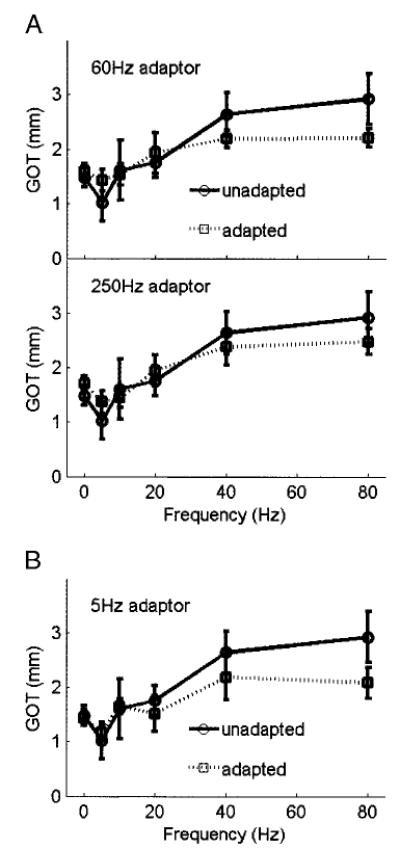Fig. 6.

A: effect of vibratory adaptation at 60 and 250 Hz on OD. The 60-Hz adaptor produces a significant improvement in performance at the high frequencies while having little effect at the low frequencies. The 250-Hz adaptor produces a similar but nonsignificant effect. These results suggest that the RA signal interferes with the spatially modulated signal conveyed by SA1 fibers. B: effect of vibratory adaptation at 5 Hz on OD. The effect of the 5-Hz adaptor is almost identical to that of the 60-Hz adaptor, suggesting that the improvement in OD after vibratory adaptation is due to the effect of the adaptor on RA rather than PC fibers.
